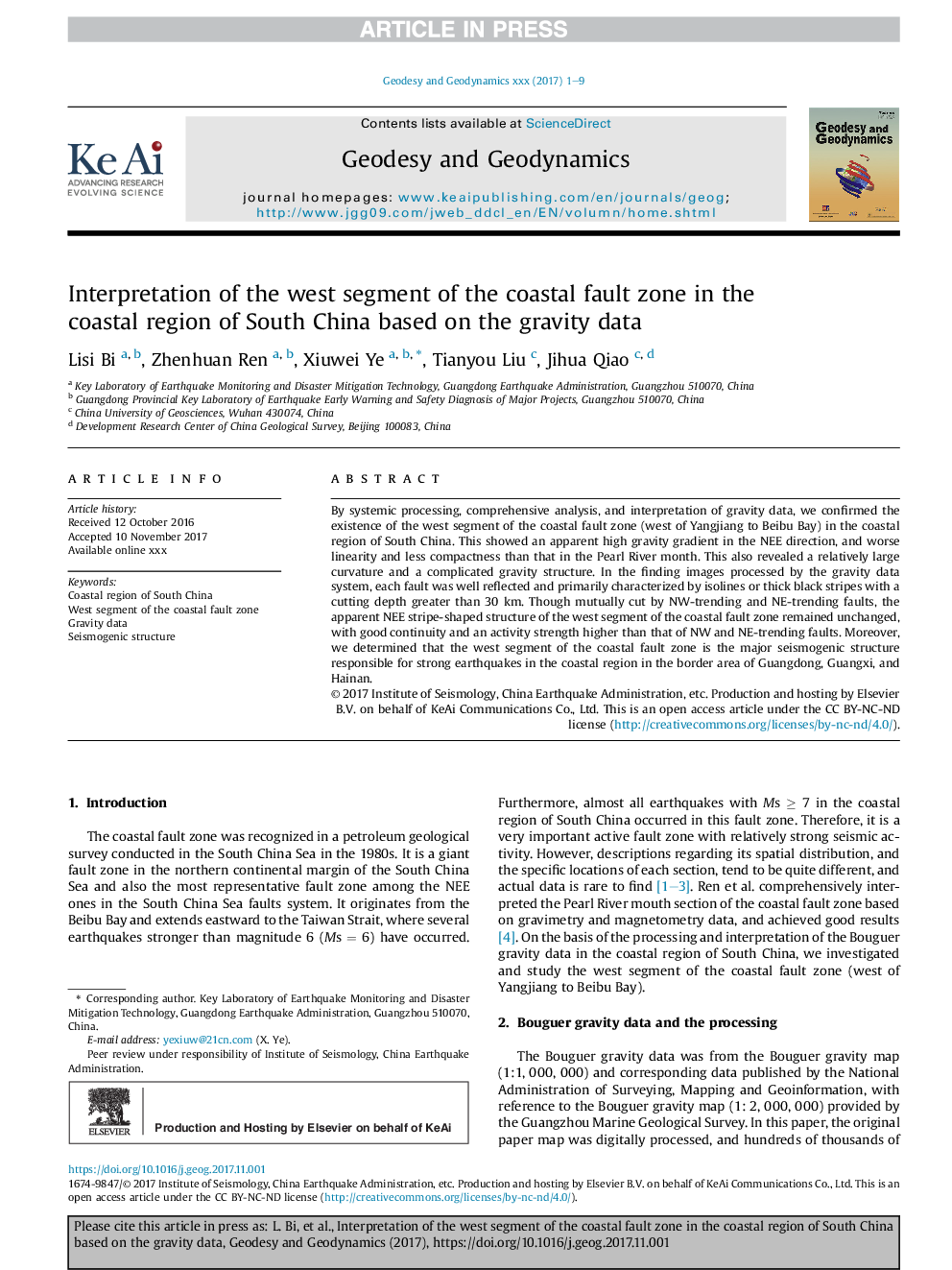| Article ID | Journal | Published Year | Pages | File Type |
|---|---|---|---|---|
| 8907863 | Geodesy and Geodynamics | 2018 | 9 Pages |
Abstract
By systemic processing, comprehensive analysis, and interpretation of gravity data, we confirmed the existence of the west segment of the coastal fault zone (west of Yangjiang to Beibu Bay) in the coastal region of South China. This showed an apparent high gravity gradient in the NEE direction, and worse linearity and less compactness than that in the Pearl River month. This also revealed a relatively large curvature and a complicated gravity structure. In the finding images processed by the gravity data system, each fault was well reflected and primarily characterized by isolines or thick black stripes with a cutting depth greater than 30Â km. Though mutually cut by NW-trending and NE-trending faults, the apparent NEE stripe-shaped structure of the west segment of the coastal fault zone remained unchanged, with good continuity and an activity strength higher than that of NW and NE-trending faults. Moreover, we determined that the west segment of the coastal fault zone is the major seismogenic structure responsible for strong earthquakes in the coastal region in the border area of Guangdong, Guangxi, and Hainan.
Keywords
Related Topics
Physical Sciences and Engineering
Earth and Planetary Sciences
Earth-Surface Processes
Authors
Lisi Bi, Zhenhuan Ren, Xiuwei Ye, Tianyou Liu, Jihua Qiao,
